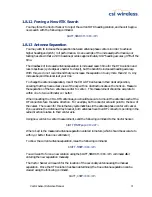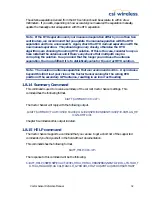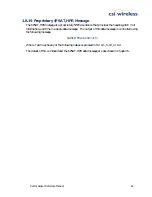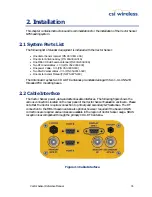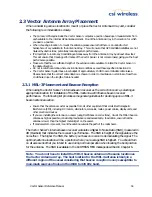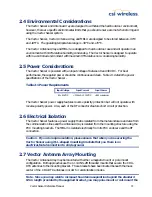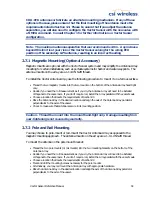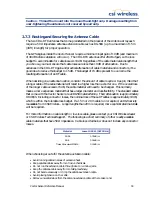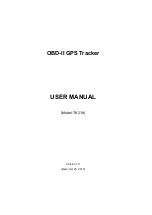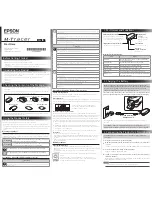
Vector Sensor Reference Manual
24
$JATT,MAGCLR<CR><LF>
Once the command has been issued, the vessel needs to rotate 360
°
three to four times. The
following command can be sent during the calibration procedure to ‘ask’ the Vector if the
calibration is complete and if so, to automatically save it to memory for subsequent power cycles.
$JATT,MAGCAL<CR><LF>
If the Vector enclosure is reinstalled in a different location, even on the same vessel, you will need
to clear the calibration table with the $JATT,MAGCLR command and complete the new
calibration. Similarly, if any objects containing metal are moved near or away from the sensor, this
command will need to be sent to the receiver and a new calibration performed.
Note - It is very important to perform the calibration only after the installation of the
Vector has been confirmed to be complete. If the Vector’s location is changed, you
will need to clear the calibration and recalibrate. A valid GPS heading is required
during the calibration process.
1.8.5
Gyro Aiding
The Vector Sensor’s internal gyro is shipped on by default, and it offers two benefits. It will
shorten reacquisition times when a GPS heading is lost, due to obstruction of satellite signals, by
reducing the search volume required for solution of the RTK. It will also provide an accurate
substitute heading for a short period (depending on the roll and pitch of the vessel) ideally seeing
the system through to reacquisition. This is why we highly recommend you leave the gyro aiding
on.
Exceeding rates of 30 degrees per second is not recommended since the gyro cannot measure
rates beyond this point. This is a new recommendation since we now use gyro measurements to
get a heading rate measurement.
To turn on the gyro-aiding feature, use the following command.
$JATT,GYROAID,YES<CR><LF>
If you wish to turn this feature off, use the following command.
$JATT,GYROAID,NO<CR><LF>
If you wish to request the status of this message, send the following command.
$JATT,GYROAID<CR><LF>
The Vector’s gyro now requires a “warm-up” procedure. The gyro will automatically warm up by
itself over time, but to ensure that it is ready when you need it, it is best to follow the procedure
below.
When your Vector Sensor unit is installed, apply power and wait several minutes until
it has acquired a GPS signal and it is computing heading. Ensure that the gyro-aiding
feature is on by issuing a $JATT,GYROAID<CR><LF> command. Then, slowly spin






















